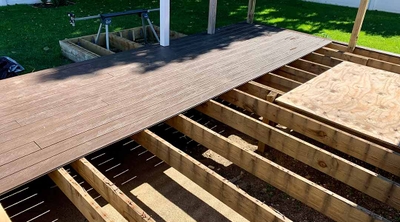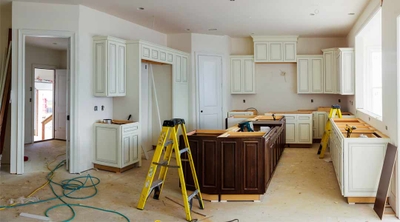How to raise a roof
3 min read
If you want to expand your existing home, raising the roof could be one way to get the extra living space you want. It allows you to enhance interior design elements and improve curb appeal. However, raising a roof is costly, and you’ll need to move out of your home during construction.
We spoke with Gregg Cantor, president, and CEO of Murray Lampert, Design, Build, Remodel, to get his thoughts on when raising the roof makes sense, when it doesn’t, and how to raise a roof.
What is the cost to raise a roof on an existing home?
It’s difficult to put a number on the cost to raise a roof because the price depends on several factors. Even when you have a design for your roof-raising project, you won’t be able to get a firm price until the project is designed and engineered because so many variables can influence the final cost. However, you should be able to get an educated budget range from an experienced contractor or builder before incurring any design or engineering costs.
The pricing factors to raise a roof include the existing condition of your roof, cabinets and fixtures that need to be removed and reinstalled, labor costs in your area, building codes where you live, existing electrical, plumbing, and mechanical that need to be relocated, permits and design and scope of the project.
According to Cantor, there are two ways to get a budget range for a project. Working with a design and build company will help as they handle everything related to the project, including design, engineering, and construction. They get the permits from the appropriate authorities and hire all the subcontractors to do the work. Or you could work with an architect, who can draft the general plans for you. Then work with a general contractor to get a budget range for the project. Or you can get bids from each subcontractor separately (e.g., HVAC, carpenter, etc.).
Learn what questions to ask when hiring a contractor or subcontractors to raise your roof.
When should you consider raising the roof on your home?
There may be times when raising the roof is a good option and others when it probably isn’t your best bet. According to Cantor, raising the roof to create additional living space is usually worth the expense and inconvenience. This is especially true if you love your neighborhood and don’t want to move or live in an area where the housing market is tight, and it would not be easy to find a new home to match your needs.
However, if you want to replace your eight-foot ceilings with 10-foot ceilings, raising the roof may not be the best idea because of the expense and complexity of the project. “Taking the same space and only raising a roof is probably not a great investment,” Cantor says. Raising the roof of your existing home can be incredibly complex, costly, and cause a lot more disruption than what you would expect. If you decide it’s not worth it, it’s still a good idea to understand when your roof will need replacing, even if not being raised.
How to raise a roof on an existing home
Raising the roof on a home is a significant construction project, requiring the help of many people with different areas of expertise. Here’s a brief overview of the process.
- Measure the existing property and building and draft the design plans.
- Inspect the site to get a pricing estimate for each project component.
- Submit the construction documents to the appropriate authorities to get the necessary permits.
- Secure temporary housing and put your possessions into storage.
- Remove the roof, electrical, plumbing, and mechanical (HVAC) systems.
- Reinforce your home’s existing footings or add footings to handle the weight of the new roof.
- Frame the new roof system.
- Install the new wiring, plumbing, and HVAC systems.
- Install the new roof covering, drywall, stucco, or siding.
- Complete the interior, which may involve reinstalling cabinets and fixtures and remodeling.
If you decide to raise your roof, find out how homeowners insurance works during renovations.






